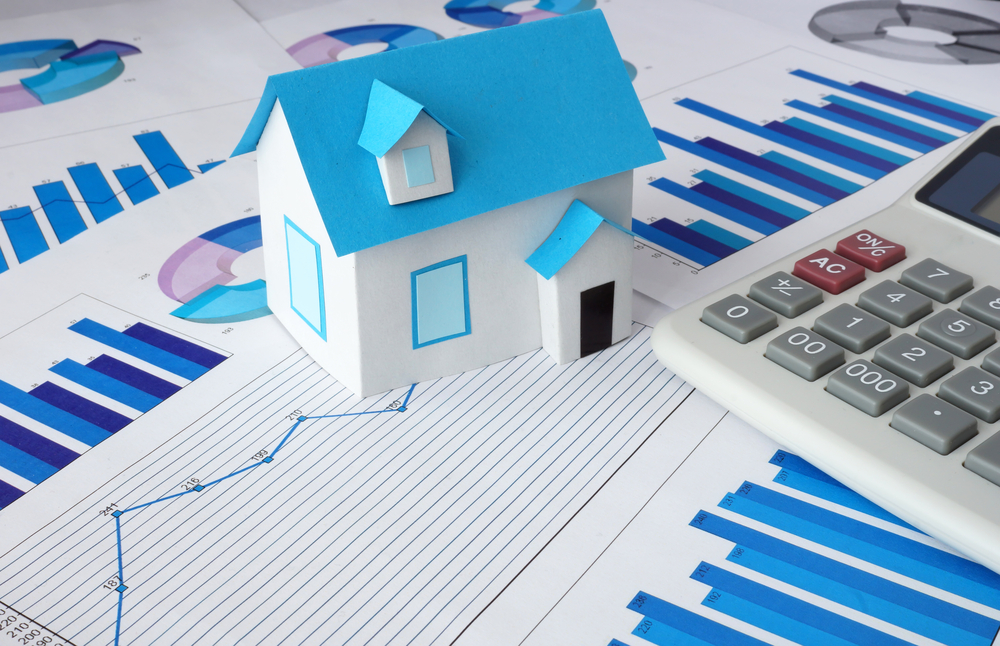Housing Market Momentum Shifts: U.S. Home Prices Record First Decline Since 2022
Housing Market Reaches Inflection Point as Growth Streak Ends
After 30 consecutive months of growth, the U.S. housing market has finally reached a turning point. April 2025 recorded a modest 0.1% decline in home prices on a seasonally adjusted basis—the first monthly decrease since September 2022. This development signals a potential shift in market dynamics that could reshape housing affordability and buyer opportunities nationwide.
The year-over-year price growth also decelerated to 4.1%, down from March's 4.9% annual increase, representing the slowest annual appreciation since July 2023. These statistics, derived from the comprehensive Redfin Home Price Index (RHPI), suggest the white-hot housing market may finally be cooling after years of relentless price escalation.
"This slight price reduction marks a significant psychological threshold for the market," explains housing economist Dr. Elaine Thompson. "While a 0.1% decline might seem negligible, it represents a fundamental shift in market psychology and could forecast the beginning of a more balanced housing landscape."
Market Forces Driving the Cooldown
Several interconnected factors are contributing to this nascent market correction:
Demand Hesitation
Consumer confidence in major purchases has waned considerably. Potential homebuyers are increasingly adopting a wait-and-see approach, with 68% of surveyed prospective purchasers reporting they're delaying decisions due to economic uncertainty. The looming specter of potential recession indicators combined with the ripple effects of recent U.S. tariff policies has dampened enthusiasm for major financial commitments.
This buyer hesitation has manifested in concrete market metrics, with pending home sales dropping 3.5% month-over-month on a seasonally adjusted basis in April. Website traffic to major real estate platforms has also decreased by approximately 12% compared to the same period last year.
Supply Expansion
The supply side of the equation shows equally significant shifts. Current housing inventory has reached a five-year high, primarily because homes are spending considerably longer on the market—the median time from listing to contract has expanded from 22 days in April 2024 to 37 days in April 2025.
This inventory buildup has forced sellers to become increasingly accommodating. Nearly 42% of sellers are now offering concessions—ranging from closing cost assistance to home warranty inclusions—approaching the historical high of 45% recorded in 2019.
Regional Market Performance Reveals Geographic Disparity
The national trend masks significant regional variations, highlighting the increasingly fragmented nature of the American housing market. Among the 50 most populous metropolitan areas, exactly half experienced month-over-month price declines in April, with notable variations:
Declining Markets
Charlotte, North Carolina led the downward trend with prices falling 1% month-over-month, followed closely by Virginia Beach, Virginia (-1%) and Miami, Florida (-0.7%). These markets, which previously benefited from pandemic-era migration patterns, are now facing correction as remote work policies stabilize and demographic shifts normalize.
"Charlotte's decline is particularly noteworthy because it had been one of the strongest performers during the post-pandemic housing boom," notes market analyst James Chen. "This reversal suggests a recalibration in previously overheated markets."
Resilient Markets
Conversely, several regions continue to demonstrate remarkable price resilience. Nassau County, New York topped the growth charts with a robust 1.8% month-over-month increase, followed by Warren, Michigan (1.3%) and New York City (1.2%). These areas benefit from persistent housing shortages combined with strong local economies that continue to attract high-earning professionals.
Affordability Remains the Central Challenge
Despite the modest price correction, housing affordability continues to be a significant hurdle for many Americans. Current mortgage rates, hovering near 6.75%, combined with still-elevated home prices, mean that the typical monthly payment for a median-priced home remains approximately 38% higher than pre-pandemic levels when adjusted for inflation.
"Home prices are flattening, which represents good news for buyers after years of relentless increases," says Redfin Senior Economist Sheharyar Bokhari. "However, even with this softening, affordability remains a major obstacle. The combination of elevated mortgage rates and high base prices means many prospective buyers continue stretching their budgets to breaking point to make purchases."
First-time homebuyers are particularly affected, with the entry threshold to homeownership remaining historically high. The typical starter home now requires approximately 43% of median income for mortgage payments in most major metropolitan areas—well above the recommended 30% threshold for housing affordability.
Strategic Implications for Market Participants
This market inflection point creates distinct strategic considerations for various stakeholders in the housing ecosystem:
For Buyers
The shifting market dynamics create potential opportunities for well-positioned buyers. With reduced competition and more inventory, buyers have increased negotiating leverage. The ability to request inspections, repairs, and seller concessions—practices that were often waived during the frenzied market of recent years—has been largely restored.
Strategic buyers might consider pursuing properties that have lingered on the market, as these sellers are increasingly likely to entertain offers below asking price. The market average for price reductions has increased to 17% of listings, up from just 9% a year ago.
For Sellers
Sellers face a more challenging landscape requiring revised expectations and marketing strategies. Realistic pricing based on current market conditions rather than aspirational comparisons to peak prices has become essential. Homes that are priced appropriately from the outset are selling three times faster than those requiring subsequent price adjustments.
Additionally, property presentation has regained importance in a less frantic market. Investments in strategic upgrades, professional photography, and comprehensive marketing now deliver measurable returns by reducing time on market and preserving sale prices.
Market Insights: Expert Answers to Common Questions
Is this the beginning of a housing market crash?
While we're seeing the first monthly decline in over two years, current indicators suggest a gradual cooling rather than a dramatic crash. The fundamental housing shortage, strong employment figures, and strict lending standards all serve as buffers against a 2008-style collapse. This appears more consistent with a market normalization than a bubble bursting.
How does this affect first-time homebuyers? This cooling presents a mixed picture for first-time buyers. On the positive side, reduced competition and more seller concessions create better negotiating conditions. However, persistently high mortgage rates continue to affect affordability. First-time buyers may find better opportunities in markets experiencing larger corrections, particularly in previously overheated Sun Belt locations.
Should homeowners be concerned about their property values?
Homeowners who purchased before 2022 still have substantial equity cushions due to the dramatic appreciation of recent years. The current minor correction is unlikely to erase these gains. However, those who purchased at market peaks in 2023-2024 may experience temporary paper losses if the cooling trend accelerates.
What does this mean for real estate investments?
Investment calculations need recalibration in this changing environment. Cash flow calculations become increasingly important as appreciation can no longer be assumed as the primary return driver. Value-add opportunities—properties requiring improvements that can be converted to higher rents or resale values—may offer better returns than turnkey properties in this market phase.
When might mortgage rates decrease?
Financial markets have currently priced in potential rate reductions beginning in late 2025, though economic developments could accelerate or delay this timeline. Prospective buyers might consider adjustable-rate mortgages with plans to refinance when fixed rates eventually decline.
As we navigate this pivotal moment in the housing cycle, market participants should remain attentive to emerging trends while recognizing that real estate remains inherently local. National statistics provide valuable context, but neighborhood-level data ultimately determines individual market outcomes and opportunities.













